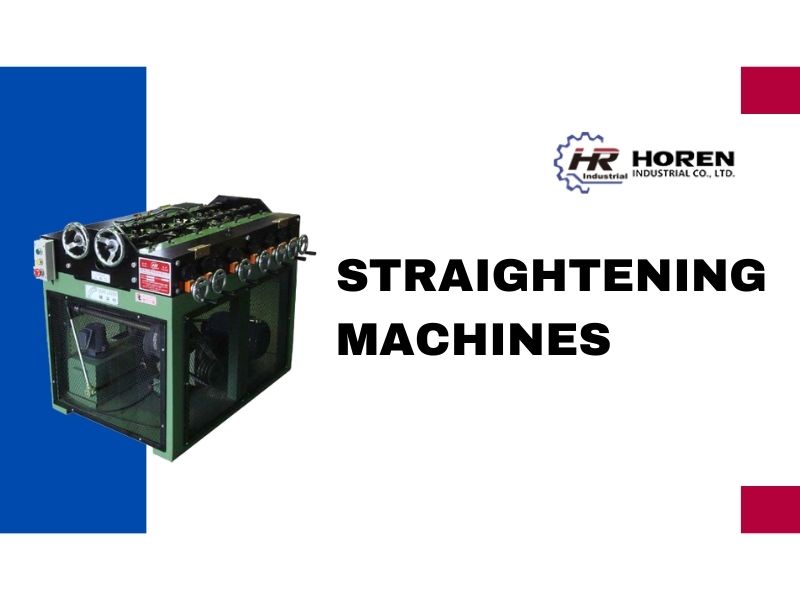
Introduction to Straightening Machines: Functions, Benefits, and Industry Applications
In today’s precision-driven manufacturing world, straightness isn’t just about appearance—it directly affects functionality, safety, and performance. That’s why straightening machines have become essential equipment in various metal processing and fabrication industries. Whether you're working with tubes, bars, rods, or wires, a straightening machine helps ensure your raw materials meet exact dimensional and structural requirements before moving into downstream operations.
This article offers a comprehensive look at what straightening machines are, how they work, their benefits, and how they serve critical roles across multiple industries.
What Is a Straightening Machine?
A straightening machine is a specialized piece of equipment used to correct bends, warps, and curves in long metal components. It ensures that these materials maintain dimensional integrity, which is crucial for both manufacturing precision and assembly accuracy.
Straightening machines apply mechanical force—usually through multiple rollers or dies—to realign the material. Rather than removing any part of the material, the machine reshapes it by pressing or guiding it through a controlled series of bends in opposite directions until it becomes straight within specified tolerances.
Common Types of Straightening Machines:
- Multi-Roller Straightening Machines: Use 6 to 13 rollers arranged in alternating top and bottom positions. These are ideal for high-precision applications and continuous production.
- Two-Roll Straighteners: Simpler machines often used for heavier or less critical workpieces, like steel rebar or rods.
- Press-Type Straighteners: Designed for localized or severe bends. These are often hydraulic and used for thicker or irregular materials.
How Do Straightening Machines Work?
At the heart of every straightening machine is a roller system that alternately bends the material in small increments. By gradually correcting the curve in both directions, the machine relieves internal stresses and aligns the metal to the desired straightness.
Modern straightening machines often include:
- Digital position scales to precisely adjust roller pressure and angle.
- Frequency-controlled drive motors, allowing flexible speed adjustments for different materials.
- Automation compatibility to integrate with feeding and unloading systems.
- User-friendly control systems for easy operation and production consistency.
This level of control ensures consistent results, even when processing batches with varying diameters, materials, or surface conditions.
Benefits of Using a Straightening Machine
Straightening machines are not only about aesthetics; their use directly impacts efficiency, quality, and long-term product performance. Here are several advantages:
- Enhanced Product Quality
Properly straightened material ensures consistent fit, function, and load distribution in the final product—especially critical in structural or safety-related components. - Increased Production Efficiency
Automation and real-time adjustment features speed up the production process and reduce reliance on manual correction or rework. - Reduced Waste and Cost
Minimizing defects early in the process means fewer rejected parts, less scrap metal, and lower downstream processing costs. - Versatile Material Handling
Straightening machines can process round, square, hexagonal, and even hollow tubes made from materials like carbon steel, stainless steel, copper, aluminum, and titanium. - Improved Downstream Accuracy
When material is straightened before cutting, welding, bending, or machining, each of those processes becomes more precise and reliable.
Applications in Key Industries
Straightening machines are used in a wide range of industries where material alignment is critical:
- Automotive
Straightening is required for steering shafts, stabilizer bars, suspension rods, and fuel delivery lines—any part where geometry affects vehicle performance and safety. - Aerospace
High-precision metal tubing and rods for aircraft hydraulics and frames require flawless straightness to pass inspection and maintain flight safety. - Construction and Infrastructure
Steel beams, structural rods, and scaffolding components must meet strict tolerances to ensure strength and stability in buildings and bridges. - Furniture Manufacturing
Metal legs and frames for chairs, tables, and shelves are often straightened before bending or welding, giving furniture both form and function. - Industrial Equipment and Tooling
Machinery shafts, drill rods, and cutting tools benefit from straightening to ensure concentricity and alignment during use. - Tube & Pipe Processing
Before welding or bending, pipes must be straightened to reduce deviation and ensure consistent internal flow or pressure tolerance.
Why Manufacturers Choose Horen Industrial Co. Ltd.
At Horen Industrial Co. Ltd., we specialize in manufacturing high-performance horizontal multi-roller straightening machines designed for precision tube and bar alignment. Our machines feature a staggered roller configuration that combines rolling and pressing adjustments, ensuring excellent straightening results even for challenging materials.
Key Features:
- Precision Roller Adjustment: Each roller is equipped with a dial scale to record settings, allowing for quick setup and consistent repeatability.
- Variable Speed Control: Integrated inverter allows speed adjustment for different materials and production requirements.
- Automation Integration: Our machines are designed to seamlessly integrate with automatic loading, feeding, and collecting systems, enabling efficient and continuous operation.
With a focus on reliability, accuracy, and ease of integration, Horen’s straightening machines are trusted by manufacturers seeking to improve product quality and streamline production.
Conclusion
Straightening machines may operate quietly in the background of production, but their role is foundational. By ensuring that metal materials are straight, consistent, and ready for further processing, these machines directly influence the quality, safety, and cost-efficiency of the final product.
If your operations involve long metal materials, investing in a high-performance straightening machine isn’t just an upgrade—it’s a strategic move.
Horen Industrial Co. Ltd. is here to help you take that step with customized solutions designed for performance, precision, and long-term reliability.
Contact us today to learn how our straightening machines can transform your production line.